Are you a beginner looking to get started with kickboxing? If so, you’ve come to the right place! We’ve created a go-to guide with all the essential knowledge and advice to help you on your kickboxing journey. From topics like proper technique and safety, equipment and clothing, and tips for working out, we’ve got you covered.
What Is Kickboxing?
Kickboxing is a martial art and combat sport that combines punches, kicks, and footwork to create a dynamic and high-energy workout. It is widely practiced for both self-defense and fitness, offering a full-body workout that enhances strength, endurance, coordination, and agility. With its roots in multiple martial arts traditions, kickboxing is both a competitive sport and a highly effective form of cardio exercise.
The sport has evolved to become a popular choice for individuals looking to improve their fitness, shed excess weight, or learn valuable self-defense skills. Kickboxing involves both upper body and lower body movements, making it one of the most balanced martial arts for overall body conditioning. Whether you’re in it for fitness, personal growth, or competition, kickboxing delivers a multitude of benefits.
Let’s explore how kickboxing came to be and how it compares to other martial arts, such as Muay Thai.
The History of Kickboxing
Kickboxing, as we know it today, originated in Japan in the 1960s, but its roots go much deeper, drawing from various martial arts disciplines, particularly karate and Muay Thai. Kickboxing was developed as a way to combine the high-energy kicks of karate with the powerful strikes of Muay Thai, making it an effective hybrid combat sport.
Here’s a breakdown of its development:
- Early Origins (1960s - Japan): Kickboxing was born from a desire to combine the most effective elements of karate and Muay Thai. Japanese martial artist Osamu Noguchi is often credited with formalizing kickboxing as a sport. He was inspired by Muay Thai’s aggressive strikes and wanted to adapt them into a form that would appeal to Japanese audiences. The first kickboxing event took place in 1966 in Japan, marking the official debut of the sport.
- Global Spread (1970s - USA): Kickboxing made its way to the United States in the 1970s, where it rapidly gained popularity. American martial artists saw it as a competitive alternative to traditional karate and Muay Thai. Around this time, the sport became more refined, with clear rules and guidelines for competitions. American fighters began to dominate the global kickboxing scene, introducing new styles and training techniques.
- The Fitness Boom (1980s - Present): In the 1980s and 1990s, kickboxing evolved beyond just combat and competition, becoming a mainstream fitness activity. The introduction of cardio kickboxing—a non-contact version of the sport—appealed to individuals looking for an intense full-body workout. Today, it is practiced in gyms worldwide, offering both a self-defense discipline and an effective fitness regimen for people of all ages and skill levels.
Kickboxing vs. Muay Thai: Key Differences
While kickboxing and Muay Thai are often compared due to their similarities, they are two distinct martial arts with different histories, techniques, and philosophies. Understanding these differences can help you choose which style is best suited to your fitness or combat goals.
Here are the key differences between kickboxing and Muay Thai:
1. Use of Elbows and Knees
- Muay Thai: Known as the “Art of Eight Limbs,” Muay Thai incorporates strikes using elbows and knees in addition to punches and kicks. This makes it a more versatile and brutal striking art, especially in close-range combat, where elbow strikes can be highly effective.
- Kickboxing: Kickboxing primarily focuses on punches and kicks. While some variations of kickboxing allow the use of knees, the majority of kickboxing styles do not incorporate elbow strikes. This makes kickboxing slightly more straightforward in terms of striking techniques, relying heavily on fast, powerful punches and kicks.
2. Clinching
- Muay Thai: One of the signature elements of Muay Thai is the clinch—a grappling technique used to control an opponent’s movements while delivering strikes, particularly knees and elbows. Clinching is an essential part of Muay Thai and is used to wear down opponents during close combat.
- Kickboxing: In kickboxing, clinching is typically not allowed, and referees often break up fighters who engage in it. This keeps the fight focused on striking from a distance rather than close-range grappling. The absence of clinching in kickboxing results in a more fast-paced, striking-based sport.
3. Kicks and Striking Techniques
- Muay Thai: Kicks in Muay Thai tend to rely on the shin for delivering power, particularly the roundhouse kick, which is one of the most commonly used strikes. Muay Thai fighters also use the teep (push kick) to control distance.
- Kickboxing: Kickboxing incorporates a variety of kicks, including those used in karate. The roundhouse kick is also popular in kickboxing, but fighters often strike with the foot or ball of the foot, rather than the shin. This gives kickboxing a slightly different dynamic when it comes to distance and impact.
4. Rhythm and Fighting Stance
- Muay Thai: Muay Thai fighters tend to maintain a more upright stance, with a slower, more deliberate rhythm. The sport has a more patient pace, where fighters often wait for the right moment to land powerful strikes.
- Kickboxing: Kickboxers often adopt a more bladed stance, which is common in karate, with a focus on quick, explosive movements. Kickboxing matches are often faster-paced, with fighters throwing a higher volume of punches and kicks.
5. Rules and Scoring
- Muay Thai: Scoring in Muay Thai places heavy emphasis on damage dealt, particularly with knees, elbows, and kicks. Clinch work and how well fighters control their opponents in the clinch also play a major role in scoring.
- Kickboxing: Kickboxing, on the other hand, tends to favor a point-based system, where fighters score by landing clean, legal strikes. While knockouts can occur, kickboxing matches are more likely to go the distance, with points determining the winner based on punches and kicks landed.
In summary, while both sports involve striking, kickboxing focuses on punches and kicks in a faster-paced environment, while Muay Thai integrates elbows, knees, and clinching in a more measured, powerful style. Both offer excellent fitness and combat training benefits, so choosing between the two depends on your personal preferences and goals.
Benefits of Kickboxing for Beginners
Kickboxing is a wonderful form of exercise to get into shape while strengthening your muscles and boosting your self-assurance. It is not only a remarkable way to burn calories and shape up, but it also boosts endurance and enhances balance, dexterity, and agility.
In addition to being a great workout, kickboxing presents a plethora of physical and mental health benefits. Kickboxing cardio increases heart rate and lung strength for improved cardiovascular health. Plus, it is a great way to release energy and is known to release endorphins, which can help with reducing stress, depression, and anxiety.
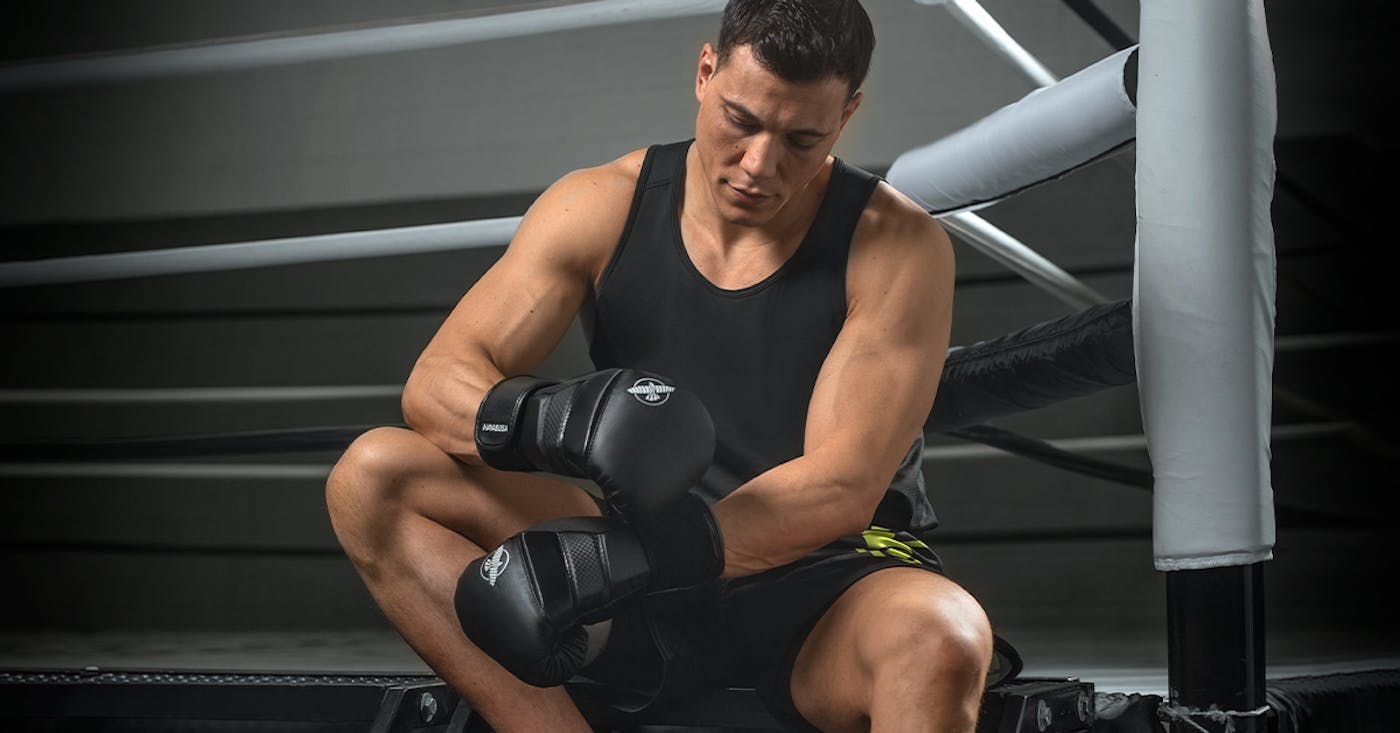
How to Get Into Kickboxing: A Step-by-Step Guide
If you’re a beginner looking to get into kickboxing, it can be overwhelming to know where to start. From finding the right class to mastering basic techniques, the process can seem daunting, but with the right approach, you can smoothly transition into this exciting martial art. Follow these steps to kickstart your kickboxing journey:
1. Find a Kickboxing Class Near You
The best way to begin your kickboxing journey is by finding a qualified instructor or class. Kickboxing classes offer structured training environments where you can learn proper techniques and safety protocols under expert guidance. Look for classes that cater to beginners, as these will start with the fundamentals and gradually progress to more advanced techniques.
You can find kickboxing classes at local gyms, martial arts studios, or even community centers. Many gyms now offer cardio kickboxing sessions as well, which can be great for fitness-focused beginners. If you’re interested in learning both the sport and fitness aspects, make sure to choose a class that covers both.
Key things to consider when choosing a class:
- The instructor’s experience and credentials
- Class size (smaller groups offer more personalized attention)
- The balance between technique training and fitness conditioning
- Reviews from past students
2. Learn the Basics: Punches, Kicks, and Footwork
Before you can dive into a full kickboxing workout, it’s essential to learn the foundational moves that every kickboxer needs. Mastering these basics will set the stage for your success and ensure you avoid injury while training. Some of the key techniques to focus on include:
- Jab: A quick, straight punch with your lead hand. It’s used to gauge distance and set up more powerful punches.
- Cross: A powerful punch thrown with your rear hand, typically after a jab.
- Hook: A circular punch aimed at the side of your opponent’s head or body.
- Uppercut: A punch that travels upward, targeting the chin.
- Roundhouse Kick: One of the most common kicks in kickboxing, where you pivot on your foot to swing your shin or foot into your opponent’s side or head.
- Footwork: Learning how to move fluidly, shift your weight, and maintain balance is essential in both offense and defense.
Spend time practicing these movements with an instructor before moving on to more advanced combinations. Focus on technique and precision rather than speed, as this will help you build strong muscle memory.
3. Start Slowly: Progressing at Your Own Pace
Kickboxing can be physically demanding, so it’s important to start slowly and listen to your body. Trying to jump into intense training right away can lead to frustration or injury. Instead, focus on mastering the basics and gradually increase the intensity of your workouts as you gain confidence and strength.
If you’re attending a kickboxing class, let your instructor know that you’re a beginner. They will guide you through modified exercises and slower-paced drills to ensure you develop proper form before increasing speed and power.
Don’t be discouraged if progress feels slow at first; building strength, endurance, and coordination takes time. Kickboxing is as much a mental discipline as it is a physical one, so stay patient and consistent.
4. Practice Outside of Class: Building Muscle Memory
As with any sport, practice makes perfect. To truly improve your kickboxing skills, practicing outside of class is essential. Whether it’s shadowboxing, hitting the heavy bag, or sparring with a friend, regular practice will help you refine your technique and improve your coordination.
- Shadowboxing: This involves practicing your punches, kicks, and footwork without an opponent. It’s a great way to build muscle memory and work on form while also boosting your cardio.
- Heavy Bag Training: Use a punching bag to practice your punches and kicks with power. This helps develop striking force while improving endurance.
- Sparring: Once you’re more advanced, sparring with a partner can help you apply what you’ve learned in a real-life scenario, allowing you to practice timing, defense, and combinations.
By making time for extra practice sessions, you’ll accelerate your progress and feel more comfortable in class.
5. Have Fun and Stay Consistent
Above all, remember to have fun with your kickboxing training. Whether your goal is fitness, self-defense, or mastering the sport, kickboxing should be an enjoyable journey. Celebrate your progress, no matter how small, and enjoy the process of learning and growing.
Consistency is key when it comes to kickboxing. Aim to attend classes regularly, practice at home, and stay committed to improving your skills. Over time, you’ll see noticeable improvements in your fitness, strength, and technique.
By staying consistent and enjoying the learning process, you’ll soon find yourself progressing from a beginner to a confident kickboxer.
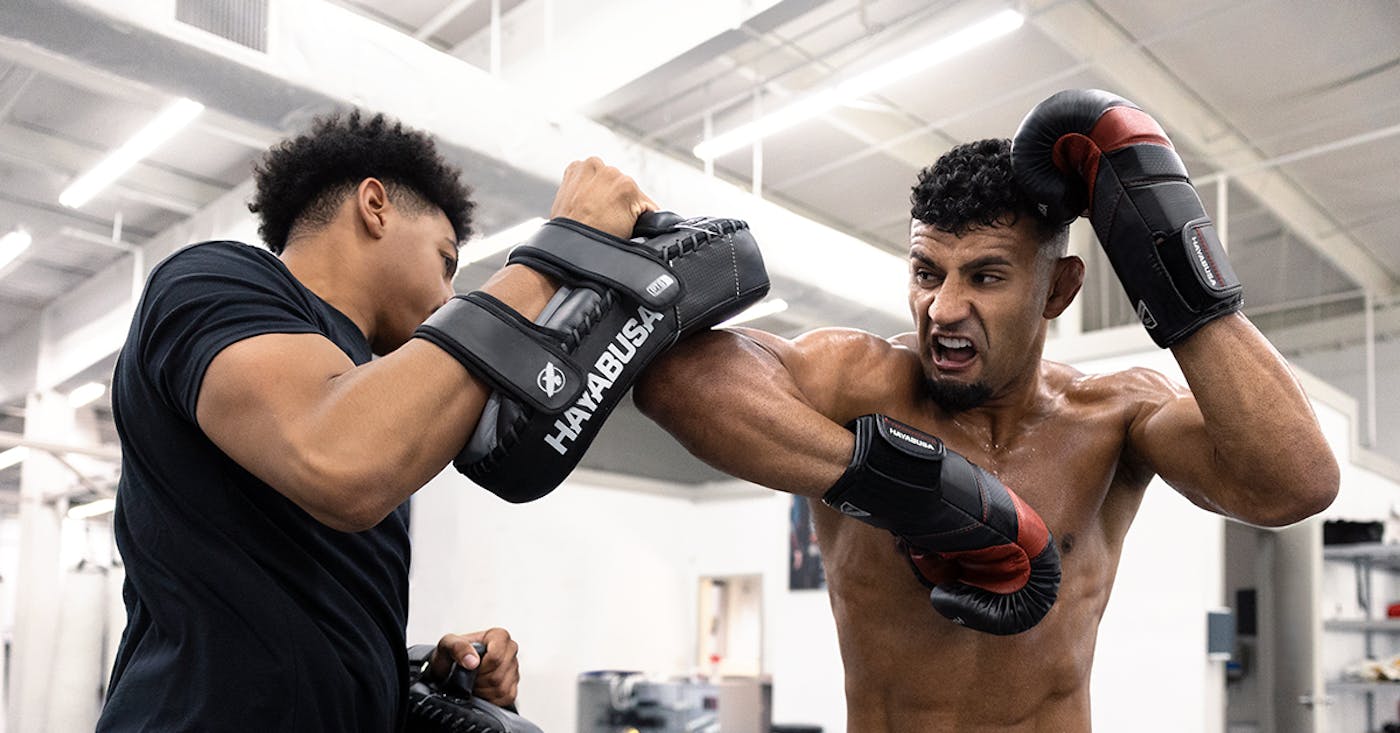
Essential Kickboxing Gear and Equipment
Gloves
It's essential to invest in the right pair of boxing gloves to protect your hands and wrists during kickboxing training. Take your time to find gloves that fit comfortably and offer adequate support, ensuring that you can fully enjoy and benefit from every session.
Hand Wraps
Did you know that hand wrapping is crucial in safeguarding your hands and wrists during kickboxing? This practice also adds an extra layer of support to your gloves, providing added protection against potential harm.
Shin Guards
Shin guards are necessary to protect your shins from hard kicks or punches. Look for shin guards that offer complete coverage, are adjustable, and provide both comfort and mobility.
Clothing
It's important to choose loose and breathable attire that allows for ample mobility during kickboxing sessions. Many opt for kickboxing shorts and a tee or tank top to stay comfortable and agile as they practice their moves.
Hayabusa Icon Kickboxing Shorts
Hayabusa T3D Boxing Gloves
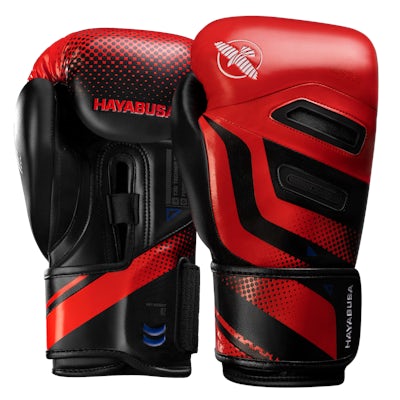
Hayabusa T3 Full Back Shin Guards
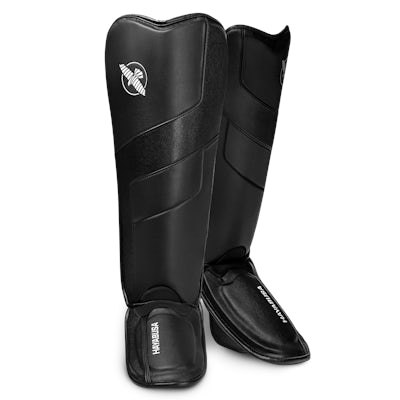
Perfect Stretch Hand Wraps

Other Things to Consider Before Start Kickboxing
Nutrition
Remember that physical activity isn’t the only thing that will help you reach your fitness goals. Incorporating a healthy, balanced diet is crucial to fuel your workouts and recovery. So, be sure to incorporate plenty of protein, complex carbs, and healthy fats into your diet.
Hydration
Hydration is an essential element of a successful kickboxing session. In order to prevent cramping, be sure to stay properly hydrated throughout your workout, by drinking sufficient amounts of water both before and after exercising.
Recovery
Taking care of your body after a kickboxing session is essential. Be sure to cool down, stretch, and allow your body enough time to fully recover. Prioritize getting enough sleep and taking rest days to prevent injury and maintain motivation. Proper recovery is crucial for overall well-being and longevity in your kickboxing journey.
Safety
Kickboxing safety should always be a priority. Whether honing your skills in a gym or practicing at home, always ensure the training area is properly supervised and all safety measures are taken into account. If you choose to train at home, ensure you have the right equipment and strictly adhere to safety regulations.
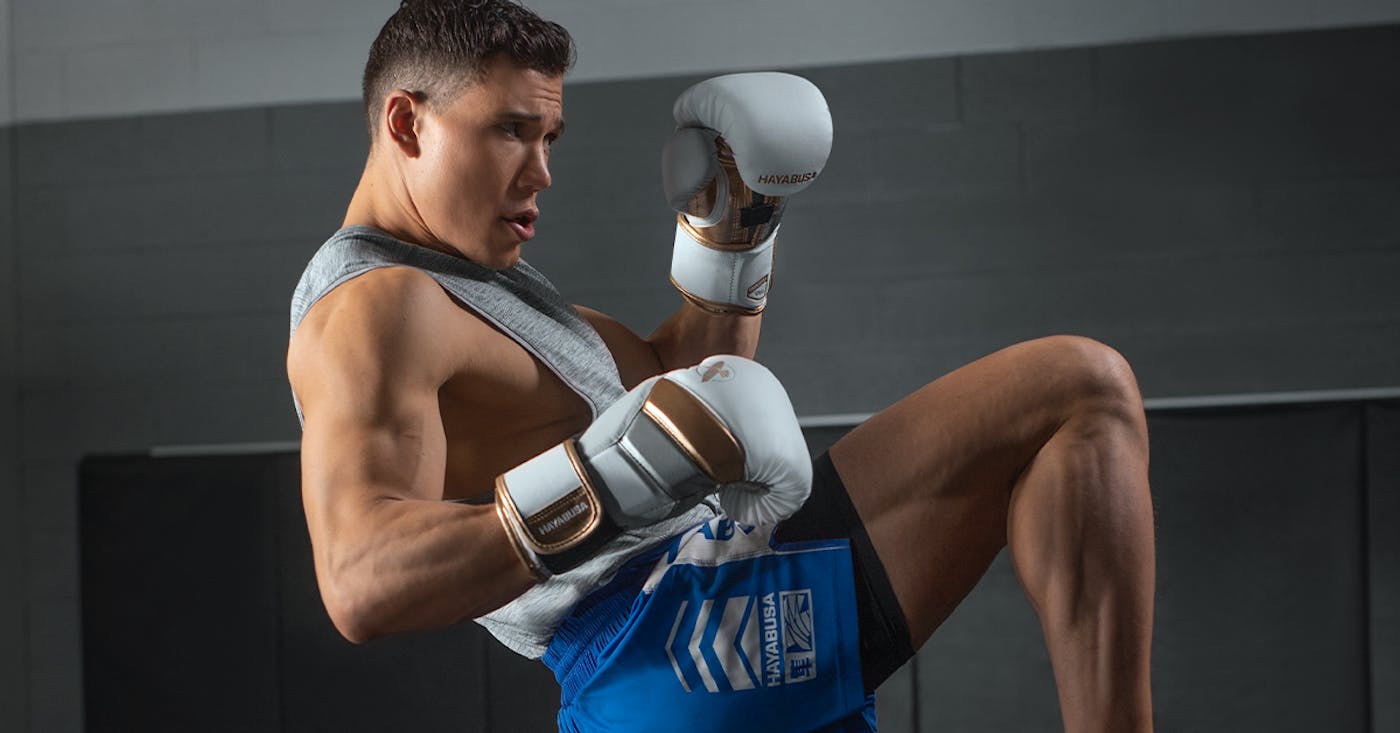
Start Your Kickboxing Journey Today with Hayabusa
Kickboxing is a great way for you to improve your fitness, build self-confidence, and learn valuable self-defense skills at the same time. However, as a beginner, it's important to take things slowly and focus more on mastering the proper technique to avoid injury and ensure progress.
By following the tips and advice outlined in this guide, you'll be well on your way to becoming a skilled kickboxer. Remember to always listen to your body, take breaks when necessary, and have fun with your training.
At Hayabusa, we are committed to providing top-quality equipment and clothing for all levels of kickboxers. We want to support you on your journey towards your fitness and martial arts goals, whether you're just starting out or are a seasoned pro. With our gear and your dedication, anything is possible.
So what are you waiting for? Put on your gloves, step into the ring, and begin your kickboxing journey today!
Sources:
VerywellFit: A Beginner’s Guide to Kickboxing
https://www.verywellfit.com/kickboxing-for-beginners-5216164
NCBI: Kickboxing Review